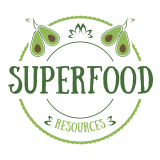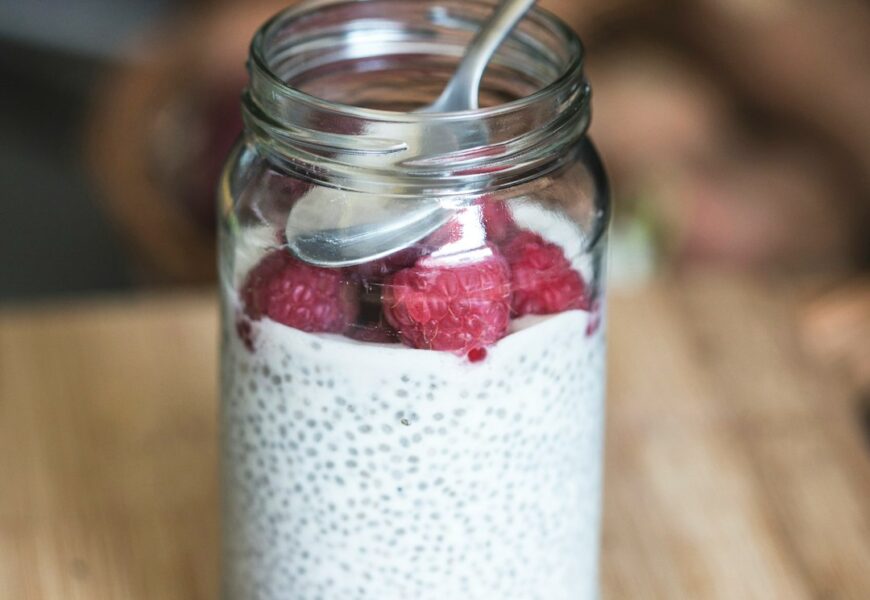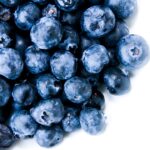Most Popular Superfoods for a Sustainable Lifestyle
Introduction
Welcome to the world of superfoods, where nutrient density and sustainability go hand in hand. Whether you’re striving to enhance your diet or reduce your environmental footprint, integrating superfoods into your lifestyle is a win-win. In this blog, we delve into the top 10 superfoods that not only pack a powerful nutritional punch but also support sustainable living practices. Get ready to transform your meals and move towards a healthier, more eco-friendly lifestyle!
Benefits of Incorporating Superfoods into Your Diet

Superfoods aren’t just a trend; they’re powerhouse nutrients that pack large doses of antioxidants, polyphenols, vitamins, and minerals. Eating them may reduce the risk of chronic diseases such as heart disease and cancer, and they can also promote a healthier complexion, hair, increased energy, and overall lower weight.
Increased Nutrient Intake
Integrating superfoods into your diet ensures you get an abundant supply of essential nutrients in one go. Unlike processed foods, superfoods are minimally altered, providing a rich source of vitamins and minerals in their natural form. This can be especially beneficial for those looking to boost their intake of fiber, antioxidants, and healthy fats—the kind of nutrients that support a robust immune system and improve overall health.
Healthier Body and Mind
The nutrients in superfoods can positively affect your physical health as well as your mental and emotional well-being. Foods rich in omega-3 fatty acids, for instance, are known to enhance brain health and could reduce the symptoms of depression. Antioxidant-rich foods help combat free radicals, reducing oxidative stress and inflammation in the body, which can ward off various chronic diseases.
Better Energy Levels
Incorporating superfoods into your meals can lead to improved energy levels throughout the day. Because these foods are high in vitamins and minerals while being relatively low in calories, they provide a sustained energy release. This helps in avoiding the midday slump commonly associated with high-sugar and high-fat foods, thereby enhancing productivity and maintaining an active lifestyle.
Top 10 Most Popular Superfoods for a Sustainable Lifestyle
Superfoods are not only beneficial for your health but also for the planet. Here are the top ten superfoods that can help you lead a healthier, more sustainable lifestyle.
Blueberries
Known for their high levels of antioxidants, particularly anthocyanin, blueberries can help fight aging and provide a boost to the immune system. They are also versatile, delicious, and easy to add to any meal, whether you prefer them in smoothies, salads, or just by themselves.
Quinoa
Quinoa is a complete protein, containing all nine essential amino acids, making it an excellent choice for vegetarians and vegans. It is also high in fiber, iron, and magnesium, and is a sustainable crop as it requires little water and can thrive in poor soil.
Chia Seeds
Chia seeds are laden with omega-3 fatty acids, fiber, and calcium. Just a spoonful can help maintain a healthy digestive tract and improve cardiovascular health. They are easy to incorporate into your diet—sprinkle them over yogurt, salads, or blend into smoothies.
Kale
Renowned for its health benefits, kale is high in fiber and has more iron per calorie than beef. It is rich in antioxidants, vitamins C and K, and calcium. Kale grows easily in various climates, making it a sustainable addition to your garden.
Almonds
Almonds are a fantastic source of vitamin E, fiber, and protein. They also contain healthy fats that can help lower bad cholesterol levels. Opting for organic and local almonds ensures sustainability and helps support local farmers.
Avocado
Avocado is not only rich in healthy fats beneficial for heart health but also has a unique profile of nutrients and antioxidants. They promote satiety and taste delicious, making them a popular choice in a range of dishes from salads to spreads.
Green Tea
Green tea is celebrated for its high levels of antioxidants and metabolism-boosting properties. It’s a sustainable crop, as tea plants can be harvested repeatedly, and it has a smaller carbon footprint compared to coffee.
Sweet Potatoes
Sweet potatoes are an excellent source of vitamin A, vitamin C, manganese, fiber, and several other important nutrients. They are relatively easy to grow and are hearty crops, making them an ideal choice for sustainable farming practices.
Flaxseeds
Rich in omega-3s, lignans, and fiber, flaxseeds contribute to heart health and can help manage blood sugar levels. Additionally, flax is often used in crop rotation, promoting healthier soil and improved yield of subsequent crops.
Broccoli
Broccoli is packed with vitamins K and C, and is known for its cancer-preventing potential. Like kale, broccoli is resilient and can be grown in a variety of climates, making it an excellent choice for those looking to cultivate their own vegetables.
Adding these superfoods to your diet not only boosts your health and energy but also supports a sustainable food system. Enjoy the journey towards a healthier lifestyle with these nutrient-packed choices!
Ways to Include Superfoods in Your Daily Meals
Superfoods can easily be incorporated into your daily meals, enhancing flavor and boosting nutrition. Here are some creative ways to add these powerful ingredients to your diet.
Smoothie Recipes
Smoothies are a fantastic way to start your day or refresh yourself with a nourishing snack. To make a superfood smoothie, blend a base of almond milk or yogurt with fruits like blueberries or acai berries. Add a handful of spinach or kale for a green boost and a spoonful of chia seeds or hemp seeds for extra fiber and omega-3 fatty acids. For added sweetness and texture, throw in some banana slices or a scoop of nut butter.
Salad Ideas
Salads are versatile and can transform various superfoods into a delightful meal. Begin with a base of dark, leafy greens such as arugula or Swiss chard. Top with colorful vegetables, nuts, and seeds. For a hearty addition, include quinoa or farro. Dress your salad with a homemade dressing made from olive oil, lemon juice, and a touch of honey. Sprinkle some dried goji berries or sliced avocado for an extra layer of superfood benefits.
Snack Options
For snacks, think beyond the usual and opt for nutrient-packed options. Kale chips can be a crunchy, satisfying treat. Simply toss kale leaves with a bit of olive oil and sea salt, then bake until crisp. Nuts like almonds or walnuts are great for snacking and can be enhanced with a sprinkle of turmeric or cayenne for a spicy kick. Another excellent snack is apple slices with almond butter, which pairs crunch with creamy richness while packing a nutritional punch.
Main Course Incorporations
Incorporating superfoods into your main courses can be both simple and delicious. Stir-fried quinoa or brown rice can serve as a perfect backdrop for a variety of vegetables and spices. Add in some broccoli, carrots, and a drizzle of tamari for an Asian-inspired dish. Alternatively, bake a piece of salmon with a crust of crushed walnuts and parsley for an omega-rich dinner option. These dishes not only meet your nutritional needs but also ensure you enjoy every bite without compromise.
Tips for Buying and Storing Superfoods

Purchasing and storing superfoods properly can greatly affect their nutritional benefits and longevity. Here’s how to handle these nutrient powerhouses.
Buying Organic vs. Conventional
Whenever possible, opt for organic superfoods to avoid the intake of pesticides and chemicals. Organic farming supports sustainable practices and often results in more nutrient-dense produce. However, if cost is a concern or organic options aren’t available, remember that eating conventional superfoods is still better than not eating them at all. Use the Environmental Working Group’s “Dirty Dozen” list as a guide to prioritize organic purchases.
Proper Storage Techniques
Proper storage is crucial to preserving the freshness and nutritional quality of superfoods. Store leafy greens in a clean, airtight container with a paper towel to absorb excess moisture, which can promote longevity. Keep grains and seeds in airtight containers in a cool, dark pantry. Berries should be stored in the refrigerator and washed just before eating to prevent mold growth.
Maximizing Freshness
To maximize the freshness and nutritional content of superfoods, buy them in smaller quantities more frequently. This ensures they are consumed at their peak of freshness. Consider subscribing to a local CSA (Community Supported Agriculture) or visit farmers’ markets regularly. Not only will this support local farmers, but it will also guarantee that you’re incorporating the freshest superfoods into your diet. Furthermore, understand the seasonality of superfoods to enjoy them when they are naturally at their best and most flavorful.
Conclusion
Incorporating superfoods into your daily meals isn’t just a trend; it’s a powerful way to boost your health and support sustainable living practices. The superfoods listed above not only offer extraordinary nutritional benefits but also promote ecological balance by encouraging locally sourced and organically grown produce. Embrace these nutrient-dense naturally abundant, or sustainably farmed, options to enhance your wellbeing. Start small, maybe by introducing a couple of these superfoods into your diet, and observe the profound benefits they can bring to your health and the environment. Remember, every small choice can lead to big changes.










